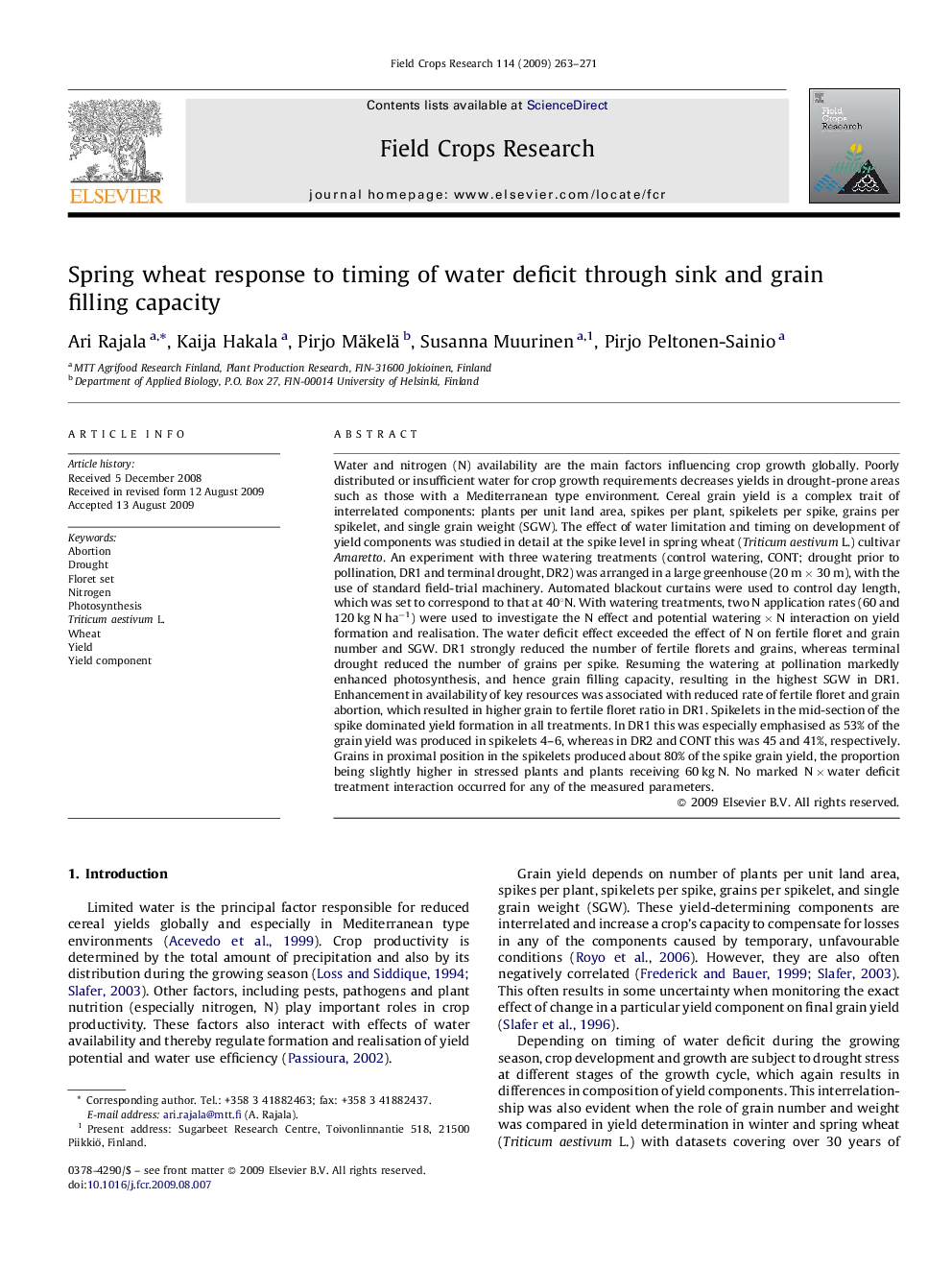| کد مقاله | کد نشریه | سال انتشار | مقاله انگلیسی | نسخه تمام متن |
|---|---|---|---|---|
| 4511116 | 1321892 | 2009 | 9 صفحه PDF | دانلود رایگان |

Water and nitrogen (N) availability are the main factors influencing crop growth globally. Poorly distributed or insufficient water for crop growth requirements decreases yields in drought-prone areas such as those with a Mediterranean type environment. Cereal grain yield is a complex trait of interrelated components: plants per unit land area, spikes per plant, spikelets per spike, grains per spikelet, and single grain weight (SGW). The effect of water limitation and timing on development of yield components was studied in detail at the spike level in spring wheat (Triticum aestivum L.) cultivar Amaretto. An experiment with three watering treatments (control watering, CONT; drought prior to pollination, DR1 and terminal drought, DR2) was arranged in a large greenhouse (20 m × 30 m), with the use of standard field-trial machinery. Automated blackout curtains were used to control day length, which was set to correspond to that at 40°N. With watering treatments, two N application rates (60 and 120 kg N ha−1) were used to investigate the N effect and potential watering × N interaction on yield formation and realisation. The water deficit effect exceeded the effect of N on fertile floret and grain number and SGW. DR1 strongly reduced the number of fertile florets and grains, whereas terminal drought reduced the number of grains per spike. Resuming the watering at pollination markedly enhanced photosynthesis, and hence grain filling capacity, resulting in the highest SGW in DR1. Enhancement in availability of key resources was associated with reduced rate of fertile floret and grain abortion, which resulted in higher grain to fertile floret ratio in DR1. Spikelets in the mid-section of the spike dominated yield formation in all treatments. In DR1 this was especially emphasised as 53% of the grain yield was produced in spikelets 4–6, whereas in DR2 and CONT this was 45 and 41%, respectively. Grains in proximal position in the spikelets produced about 80% of the spike grain yield, the proportion being slightly higher in stressed plants and plants receiving 60 kg N. No marked N × water deficit treatment interaction occurred for any of the measured parameters.
Journal: Field Crops Research - Volume 114, Issue 2, 10 November 2009, Pages 263–271